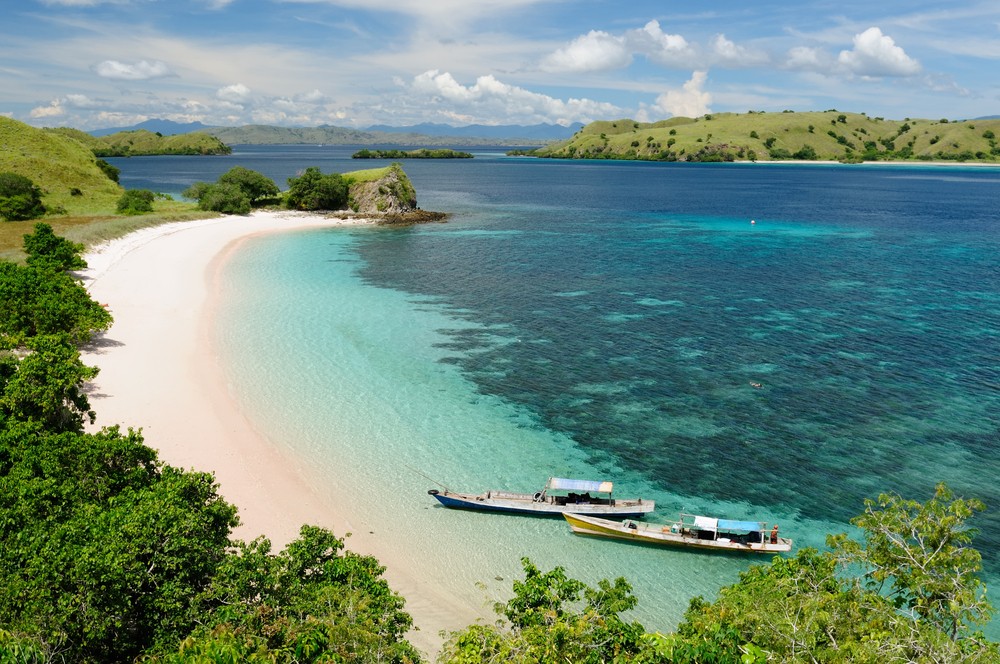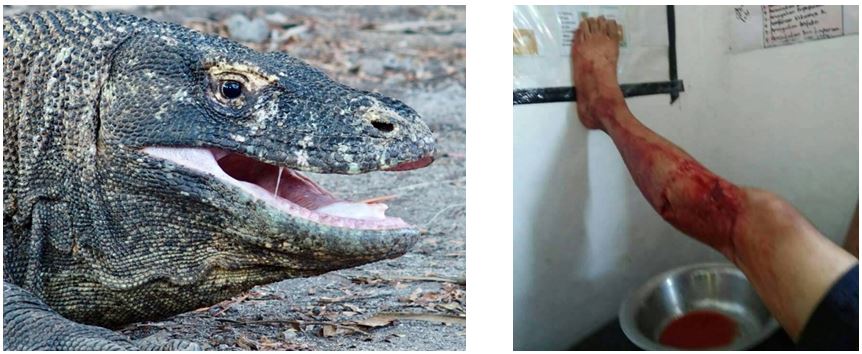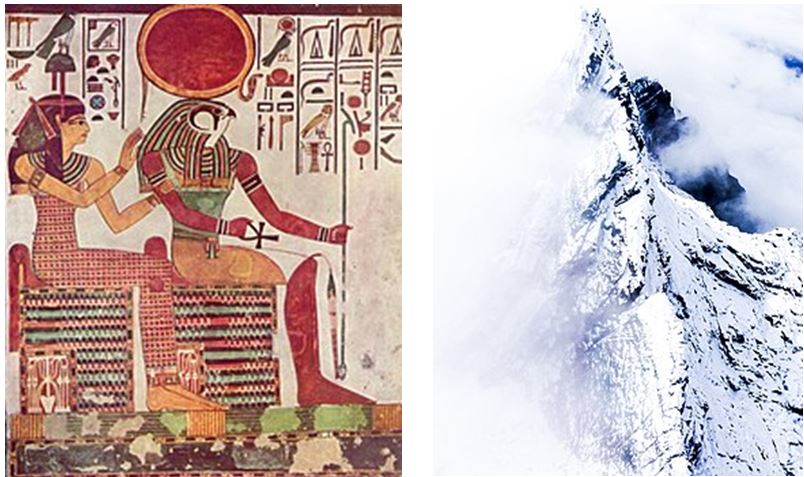Health, Safety and the Pursuit of Happiness

Preparation and Communication
Where strenuous activities are anticipated as part of your travel with us, we highly advise doing some pre-conditioning for at least a month prior to travel, in order that you get the most out of your trip. Please advise us of any particular, medical conditions you or travel companions may have that could require emergency treatment, or otherwise create and emergency situation. As required by our guests, we can include nursing or other medical support as part of your travel. This is ideally arranged well in advance of your travel to ensure support availability. Being mindful during your travel, is excellent and cheap insurance.
Medical Services and Support
Generally well-serviced and supported hospitals, medical clinics and dentists are present on all major islands and population centres in Indonesia. Please advise us, however, if you have particular health conditions, including allergies we should be aware of well-prior to your booking and or travel. Arrangements can also be made for private nursing support during your travel. All guests should ensure they have adequate health and travel insurance prior to travel.
Always travel with a small personal first aid kit with basic supplies. Useful items include: sanitizer/alcohol swabs, antibiotic cream, bandages & dressings for small to medium cuts and scrapes, triangle bandage and or large bandana, first aid tape, pain reliever, anti-diarrhea medicine, personal prescriptions, coral-friendly sunscreen, aloe vera, insect repellent, oral antihistamine , corticosteroid cream, eye and ear drops, oral dehydration salts.
Safety, Security and Medical Advisory Services
Up-to-date travel advisories on health and safety for international travellers is available from numerous sources including the World Health Organization as well as some governments and travel insurance providers. Examples of some of these resources can be accessed through these links:
Hygiene
KTT takes extra care to help ensure any accommodations and dining experiences observe a high degree of cleanliness to help reduce the risk of hygiene-related health issues. Guests are advised to be attentive to their own hygiene and carry what sanitizers and medicines they find effective. All cuts or scrapes should be promptly cleaned, followed by use of an antibiotic cream and sterile bandage.
Malaria/Dengue/ Bacterial Diarrhoea and others
Indonesia, like virtually all tropical countries, plays host to a wide range of diseases including dengue, malaria and hygiene-related bacterial diarrhea. While nationally dengue has been reported to be declining, increases have lately been observed in North Sumatra, Riau, West Kalimantan, North Kalimantan, North Sulawesi, Bali and Jakarta. While malaria can occur throughout Indonesia it is currently more common in Papua, East Nusa Tenggara, Maluku, North Maluku and West Papua.
Risk of contracting mosquito and fly-borne diseases can best be mitigated by use repellents, mosquito nets, screened living spaces, and fans. Active mosquito control programs are commonly undertaken by most higher-end accommodations. Vaccines are available in some locations for dengue and malaria under very specific conditions. There are several drugs that can be taken as a malarial prophylaxis and travellers are advised to consult travel medical professionals prior to their trip.
There are a very wide range of other viral, bacterial and parasitic diseases present in Indonesia, the risk of exposure can often be reduced by good hygiene, drinking only clean water, consuming properly prepared foods, eating only cooked meats, wearing gloves and foot coverings where appropriate, avoiding contact wild animals (alive or dead), and seeing a doctor if you develop any unusual symptoms. Increasing inflammation, swelling, or pain, around a wound or bite is never a good sign.
Potentially hazardous Fauna and Flora
While Indonesia has a wide range of potentially dangerous native wild species of flora and fauna the chance of encounter is typically extremely low. This list includes larger mammals such as Sumatran and Bornean Pygmy Elephants, Sumatran Tiger, Javan rhinoceros and wild pigs. Most travellers would feel lucky to encounter any of these under the right circumstance. The use of local, well-trained guides is the best way to minimize risks of adverse encounters while enjoying habitats where these species still find home. Indonesia has recently embarked on a country wide rabies elimination program, however, travellers should always avoid animals that are behaving unusually. Walking or hiking with a stout walking stick is never a bad idea,

Happiness if not being bitten by a Komodo Dragon
Indonesia is home to several reptile species that can present varying degrees of risk when encountered by surprise or when going for that macho selfie. These include: Komodo dragon, saltwater crocodile, Eastern Brown Snake, Taipan, white-lipped Malayan pit viper, Blue (or Malayan) Krait, King Cobra, Javan Spitting Cobra. Indonesian reticulated python and sea snakes. Of these species, the Komodo dragon has gained celebrity status and is a very popular bucket list species that can be seen at Komodo National Park as well as lesser-known locations on Flores Island. Trekking in Komodo National Park can only be done when accompanied by a licensed KNP guide. Documented cases of snake bite in Indonesia are exceedingly rare in Indonesia.

Rove Beetles
Aside from mosquitoes, Indonesia boasts an enormous diversity of insect life but reportedly no poisonous spiders or particularly dangerous scorpions. Making up for that to some degree are “Rove Beetles” sometimes referred to as “Tomcat” Beetles. These are small, relatively slender, soft bodied beetles often red and black or simply black in coloration that can inflict an uncomfortable rash on your skin if not removed carefully. A new species of giant, venomous wasp (Megalara garuda) was recently discovered on the Indonesian island of Sulawesi. Fortunately Wallace’s giant bee (Megachile pluto) , the largest known species of bee in the world, and found in Indonesia’s North Maluccan Islands, is quite rare and docile. More likely to be encountered, and more aggressive when disturbed, is the Asian giant honeybee (Apis dorsata) found in Borneo.
The exceptionally diverse marine waters of Indonesia area also home to approximately 200 species of shark. Other species that can, on rare occasion, result in injury to the unwary adventurer include stone fish, lionfish, fire coral, sea urchins, cone shells, and Indonesian sea wasps (a jellyfish). As a general rule: know what to look for; be self-aware; avoid handling, stepping on, or otherwise making contact with marine creatures including corals; wear protective clothing e.g. dive skins, neoprene booties, gloves.
While there are many poisonous plants in Indonesia, very few result in contact-based reactions. Of this latter group the stinging plant “Pulus (Laportea stimulans) can leave a painful rash and blistering on skin contact. This species is common in Sumatra and western Java and can be readily identified.
Volcanoes & Earthquakes
Indonesia lies within the “Ring of Fire” due to a complex and active tectonic environment involving the collision of two continental plates and two oceanic plates. This geological contest has resulted in formation of well over a hundred active volcanoes and numerous earthquakes each year. Volcanoes are largely absent from Borneo/Kalimantan, Sulawesi and New Guinea but form major tourist attractions in Java, Bali, Sumatra, Lombok and Flores. Eruptions and earthquakes are hard to predict and can generate conditions that adversely affect air travel, ground travel and general safety.
The largest volcanic eruption in recorded history is believed to be the eruption of Mount Tambora on the Indonesian island of Sumbawa in 1815. The eruption was a VEI-7 (Volcanic Explosivity Index) event, which is the second-highest level of explosive power. The eruption began on April 5, 1815, with a series of smaller explosions, followed by a massive explosion on April 10. The eruption produced a column of ash and gas that reached a height of 43 kilometers (27 miles) into the atmosphere and ejected an estimated 160 cubic kilometers (38 cubic miles) of material, including ash, rock, and pumice. The 1883 VEI-6 eruption of Krakatoa in Indonesia is also among the top 5 historic volcanic events and generated a tsunami killing around 36,000 people. Mount Merapi on Java has in recent years been restless.
A few key measures to take to reduce your risk while travelling in Earthquake and Volcano prone areas in Indonesia:
- Know where to find emergency exits, evacuation routes, and safe zones in your accommodations and the surrounding area (e.g. open areas or sturdy doorways).
- Be familiar with your accommodation’s emergency procedures and muster location.
- Avoid accommodations that appear conspicuously compromised.
- Pack an emergency kit – Prepare an emergency kit with essential items such as water, food, first aid supplies, a flashlight, particulate mask(s), a well charged cell phone and power bank, Keep the kit in an easily accessible location.
- Stay informed – Stay tuned to local news and alerts to be aware of any earthquake warnings or updates. Listen to instructions from your guide.
- Drop, cover, and hold on – If you feel an earthquake, drop to the ground, take cover under a sturdy piece of furniture, and hold on until the shaking stops. Avoid windows, doors, and elevators.
- If immediate access to an exit, leave the building.
- If there is a tsunami warning or other emergency, evacuate to higher ground or follow instructions from local authorities.
- Be cautious after the earthquake – After the earthquake, be cautious when moving around and avoid damaged areas, downed power lines, and other hazards.
- Wear protective clothing and a dust mask to avoid inhaling ash and other volcanic materials.
During times of volcanic activity, earthquake, and or extreme precipitation, avoid areas that may be subject to slope failure, flooding, inundation by lava, debris and pyroclastic flows. In the case of volcanoes low lying areas may also attract hazardous accumulations of heavier toxic gases such as sulphur dioxide, hydrogen sulfide, carbon dioxide and hydrochloric acid.
Climate

* The lovely Nefetari applying sunscreen to a sun-burned, “Ra” during a hypothetical trading mission to Indonesia in the 1200’
* Snow on Indonesia’s highest mountain, Puncak Jaya : Source Wikipedia
Indonesia has a warm, tropical climate where the traveller can be at risk of sun burn, dehydration, hyperthermia and heat stroke. While sweating or otherwise moistening ones skin can cool one down through evaporative cooling, in very humid environments this process is less effective and risk of heat stroke increases.
Timing certain activities for cooler times of day is a great way to reduce risk. As Noel Coward’s 1931 classic ditty advises, only “mad dog’s and Englishmen go out in the mid-day sun”. If you have no choice but to venture out then some combination of shade and breeze seeking, sunscreen (coral-friendly), a hat, long-sleeved clothing, bandana, hand fans, umbrella, pith helmet etc are all useful, along with adequate drinking water and potential access to rehydration salts. Be mindful of the symptoms of heat exhaustion.
Banda Aceh on the North tip of Sumatra, has been identified as on average, the warmest city in Indonesia, with temperatures averaging at 36.4 C, however, in terms of temperature extremes the hottest temperatures measured from 1949 to July 2022 have been reported by the Maumere weather station on Flores Island. The current record temperature, 43.1C, was apparently recorded there In September 2001.
Despite Indonesia’s prevailing warmth, one can still be at risk of hypothermia after prolonged exposure to cooler water or during wet and windy conditions at high or low elevation. Around Bali for example, sea surface temperatures typically range from 27 C – 30 C, cooler indeed than your normal core temperature.
The coldest day measured from 1949 to July 2022 , Oo C, was reported by the FakFak weather station in West Papua in June 2009. FakFak lies at an altitude of 130 meters above sea level. As a general trend temperature drops by close to 10C for each 1000m gain in elevation.
Snow is still commonly encountered at the top of Indonesia’s highest mountain, he 4,884 m asl Puncak Jaya in Lorenze National Park, Papua. Examples of other locations with seasonally cool temperatures include the Dieng Plateau and Malang , in Java, Ruteng in West Flores, Gayo Lues in North Sumatra, Mulea in Papua. Malino Highlands in South Sulawesi, Kota Seribu between Mount Lokon and Mount Mahawu in North Sulawesi and the tops of any of Indonesia’s many volcanoes.
Being able to dry off and stay dry after getting wet is critical. Having the ability to put on multiple layers, proper rain and or wind jackets/pants, gloves, hat, and using a multi layers of clothes are all good. Always pre-plan and prepare for the location you are going and, an old Cowboy once said, “ don’t get separated from your outfit” .
Traffic
By far the highest risk factor associated with travel in Indonesia is associated with driving. This risk factor is exacerbated in densely populated urban centres as well as along the countless steep, narrow and windy roads found on most island. Conditions can be even more hazardous during rainy, windy weather where visibility can be more limited and there is added risk of tree fall, washouts and landslides.
While some travellers revel in the thrill of driving on new roads in new places, the safest approach is to generally use reliable experienced local drivers and well-maintained and equipped vehicles. Good local drivers can be a wealth of local knowledge and custom, know out of the way and interesting places, and be very helpful in the event of an accident or other adverse encounters.
Crime, Corruption & Terrorism
With reasonable care, Indonesia is an extremely safe, welcoming and inspiring destination for all travellers. Not being self-aware, being careless with belongings or valuables, staying in the wrong accommodation, being drunk and disorderly, violating the laws of the land, using abusive language with locals, flagrant disregard for local customs and sensitivities, getting involved with deals that seem too good to be true, traveling solo without a local guide or guides, and entrusting too much to strangers are all largely avoidable risk factors. Indonesia is also highly sensitive to terrorism and crime against foreign visitors and maintains both conspicuous and inconspicuous presence of security services in most areas.
Safety Self Check
Having good destination and activity knowledge in advance of your travel as well as acquiring some basic language skills beforehand is a great first step in helping avoid an incident (please see some of our suggested references under “Tours”. While we endeavour to inform our clients of any current risks to be mindful of during travel it is always worth doing a self-check before and during travel. Examples of some questions to ask yourself are:
- What are the hazards in this location and or with this activity and am I equipped physically, mentally and technically (right clothing and gear) to deal with them?
- For the short or long journey I am about to go on, do I have the key items?
- Is whatever I am about to sit in, ride on, lean on, push on, or walk on, structurally sound for the load, positionally secure, and is my balance and footing secure? (don’t forget…always maintain three points of contact)
- Can I adequately see or feel where I am going or what I am doing?
- Am I allowing myself to be distracted while doing an activity that could result in injury?
- Have I checked he weather?
- What will I do if a fire (while awake or sleeping) or crowd panic event happens in the space you are in or are adjacent to?
- Is there likely to be serious hygiene problem at this location? (note: some of the best hotels have the worst hygiene, but not where we readily see it)
- Is this animal or person behaving oddly?
- Do I know what it is I am about to eat or drink?
- What if someone I am with or near has a health or safety emergency?
- What if we break down here?
- Is this offer too good to be true?
- Is this the expected route to the destination?
